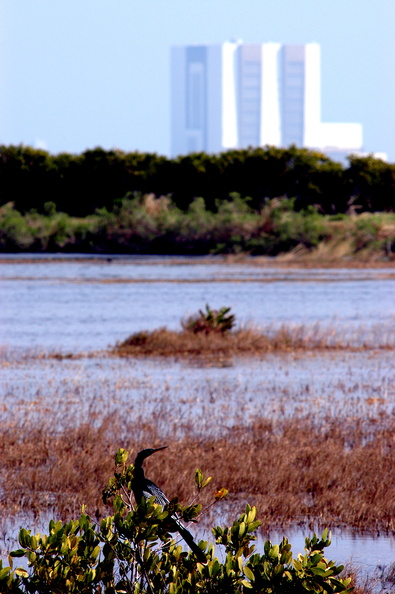
WIKIARCHIVES.SPACE
The Human Spaceflight Archive

Information
- Taken in
- Kennedy Space Center
- Outeur
- NASA
- Beskrywing
- Nature thrives with technology as seen in this photo of the Vehicle Assembly Building (background) and surrounding grounds and water. In the foreground is an Anhinga perched on waterside plants. A common inhabitant of Kennedy Space Center, it prefers freshwater ponds and swamps with thick vegetation, especially cypress. Anhinga can be found in the U.S. on the Atlantic and Gulf coasts from North Carolina to Texas. They are known as the Snakebird because when swimming they submerge their bodies, leaving only their heads and long necks visible. They are often seen on the ground and in the trees with their wings open to dry them in the sun. Kennedy shares a boundary with the Merritt Island National Wildlife Refuge, home to some of the nations rarest and most unusual species of wildlife. The marshes and open water of the refuge also provide wintering areas for 23 species of migratory waterfowl, as well as a year-round home for great blue herons, great egrets, wood storks, cormorants, brown pelicans and other species of marsh and shore birds.
- Geskep op
- Woensdag 4 Februarie 2004
- Source link
- https://science.ksc.nasa.gov/gallery/photos/2004/captions/
- Besoeke
- 309
- Gradering telling
- geen gradering
- Gradeer die foto
- License
- CC BY-NC-ND
- Modified by WikiArchives
- No (original)
- Aflaai
- 3
Aangedryf deur Piwigo